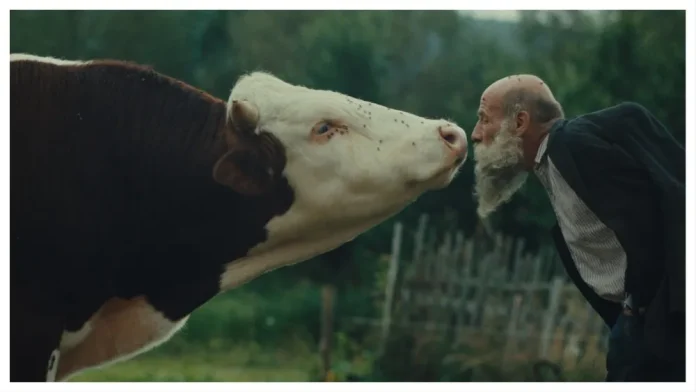Adapted from Aleš Palán’s eponymous book, which chronicles the lives of twin brothers Franta and Ondra, who live quietly and share a home, farmland, and livestock on the edge of the Šumava Mountains in the Czech Republic, Better Go Mad in the Wild is a hybrid documentary by Miro Remo. Over five years, Remo and his crew spent 60 days with the brothers, distilling that time into a taut 86 minutes that frequently challenges the conventions of documentary and storytelling.
This authorial challenge—where reality and fiction blur, where the brothers perform versions of themselves, and where even the narration is occasionally delivered by the cows and oxen that populate their world—is masterfully articulated through Dušan Husár’s striking cinematography and the precise, inventive editing of Simon Hájek and Maté Csuport. The result is a true tour de force of the uncanny, a journey the Karlovy Vary jury aptly described as a voyage toward freedom.
Having played a role in the 1989 Velvet Revolution by distributing anti-communist pamphlets and books—acts for which they were later decorated—František and Ondřej Klišík reflect on their past, present, and future. They bicker and embrace, revealing fragments of a complex human existence and relationship long misunderstood by the women they once knew. As they candidly explain, women have always struggled to adapt to the unique bond between Franta and Ondra, even as the brothers attempted to create intimacy and separation by building a wall through their home. But was such a division ever truly possible? The film suggests otherwise, and the brothers themselves often question it, addressing even heavier themes—death, the loss of a forearm—with a disarming mix of levity and dark humor.
At their core, the twins seem to embody an eternal Peter Pan syndrome, a “refusal to grow up.” Or is the very label of “Peter Pan Syndrome” merely society’s way of pathologizing a life that rejects the traditional narrative of “obligatory maturity”? Miro Remo does not offer answers—this is not a film of conclusions—but nor does it merely dwell in questions. It invites the viewer to ask their own, to reflect deeply, as they are confronted with a life so radically free that society might easily dismiss it as anarchic.
Some of the film’s most powerful moments arise when a large mirror is introduced into the narrative—an object that, though newly physical, has always existed in the brothers’ lives, given their identity as identical twins. Whether the pair carry it on their backs or gaze into it with quiet wonder, the mirror becomes an aesthetic device of profound poetry, producing some of the most hauntingly beautiful images in a journey as absurd as it is captivating.
And while their shared life does not entirely shield them from loneliness, there is in their bond a deep comfort, a hard-won freedom, and an unconditional love that renders their story not just compelling, but deeply moving.


